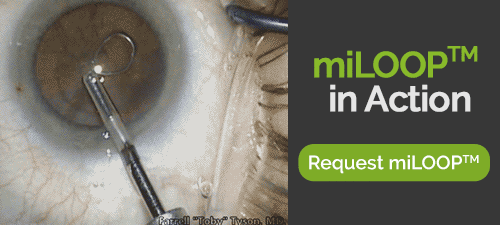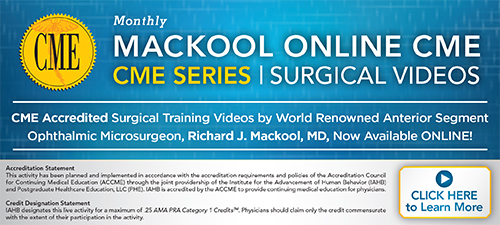
Volume 18, Number 24 |
Monday, June 11, 2018 |
|
JUNE IS HEALTHY VISION MONTH |
|
||||
|
Viscocanalostomy & Phaco-viscocanalostomy Outcomes in Advanced Glaucoma Scientists determined medium-term outcomes for individuals with advanced glaucoma undergoing viscocanalostomy.
|
|
| SOURCE: Tsagkataki M, Bampouras TM, Choudhary A, et al. Outcomes of viscocanalostomy and phaco-viscocanalostomy in patients with advanced glaucoma. Graefes Arch Clin Exp Ophthalmol 2018; May 22. [Epub ahead of print]. |  |
|
Using OCTA to Assess Neovascularization Characteristics in Early PDR Researchers classified retinal neovascularization in untreated early stages of proliferative diabetic retinopathy based on optical coherence tomography angiography, as part of a cross-sectional study.
Thirty-five eyes were included. They underwent color fundus photography, fluorescein angiography and OCTA exams. Researchers used OCTA to assess neovascularizations of the optic disc, neovascularizations elsewhere and intraretinal microvascular abnormalities. They evaluated the origin and morphology of NVD/NVE/IRMA on OCTA, and measured retinal nonperfusion areas using Image J software.
The initial layer and affiliated NPAs were significantly different in the three subtypes of NVEs (all p<0.01).
|
|
| SOURCE: Pan J, Chen D, Yang X, et al. Characteristics of neovascularization in early stages of proliferative diabetic retinopathy by optical coherence tomography angiography. Am J Ophthalmol 2018; May 26. [Epub ahead of print]. |  |

|
|
 |
|
Review of Ophthalmology® Online is published by the Review Group, a Division of Jobson Medical Information LLC (JMI), 11 Campus Boulevard, Newtown Square, PA 19073. To subscribe to other JMI newsletters or to manage your subscription, click here. To change your email address, reply to this email. Write "change of address" in the subject line. Make sure to provide us with your old and new address. To ensure delivery, please be sure to add reviewophth@jobsonmail.com to your address book or safe senders list. Click here if you do not want to receive future emails from Review of Ophthalmology Online. Advertising: For information on advertising in this e-mail newsletter or other creative advertising opportunities with Review of Ophthalmology, please contact sales managers James Henne or Michele Barrett. News: To submit news or contact the editor, send an e-mail, or FAX your news to 610.492.1049 |


